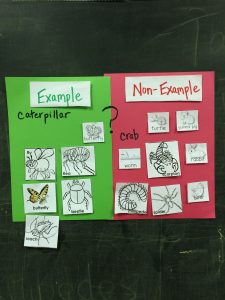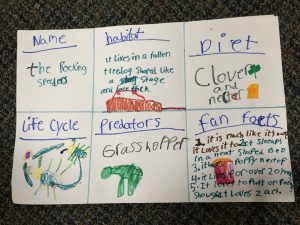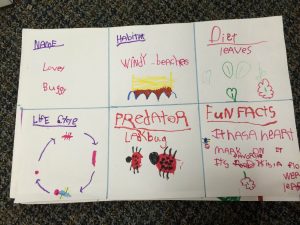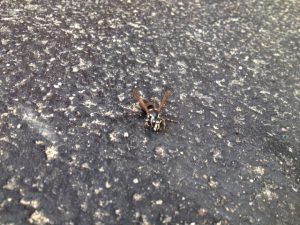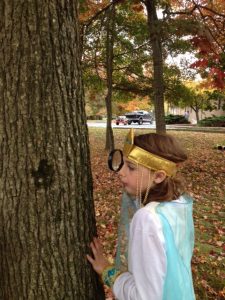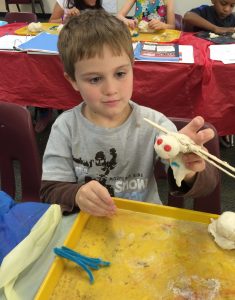Our Chrysalis class is named for it’s emerging but still protected state. These students are growing their wings while in the care of their community here. What does a day in our K-2 Chrysalis class look like? While every day is different, this is an example of a typical day. After class the lead teacher sends an email summary with photos about the days events. Here’s a class summary from a class in our Science block for a Unit called Great but Small that featured insects.
Email comments from instructor:
“Students were thrilled to use clay during science class! I have also attached a copy of the Butterfly Story I mention in the Take Home. It is a tale that everyone can benefit from hearing as it’s a poignant analogy for the struggles we all face in life. I remember reading it the first time at least 15 years ago. Tuesday’s metamorphosis lesson reminded me of it and, lo and behold, I found it online! The internet can be a wonderful thing.”
Key concepts and methods:
- Repeat affirmation: “I can control my actions.”
- Insect Review: Direct students to find the insect diagram that they labeled and placed into their Main Lesson books to help them review the defining characteristics of an insect (They have 6 jointed legs; 3 body parts—head, thorax, and abdomen; compound eyes, exoskeletons; pair of antennae; and sometimes 1-2 pairs of wings.)
- Long-term Project: Set up the following scenario, “I want you to pretend that you are an entomologist, a scientist who studies insects. Imagine that you have just made an incredible discovery– a new insect species! Over the next several classes, you will work on a report that you will present to your fellow entomologists at the Walnut Grove Insect Convention. Today, you will brainstorm what your new species looks like and then create a clay model.” Offer numerous materials (i.e. wooden sticks, pipe cleaners, beads, leaves, toothpicks, etc.) for students to use. Tell them that models should be biologically correct and reflect the characteristics they have learned. Remind them that an insect’s legs grow from the thorax while their stingers grow from the abdomen.
- Insect Life Cycles: Show the video entitled Caught on Camera: The Transformation of a Butterfly before eliciting predictions about the day’s topic (insect life cycles). Briefly share the Butterfly Story as a metaphor for viewing life challenges as growth opportunities. Define the term life cycle as a series of changes that an organism goes through as it develops and ages. Before learning new information, encourage students to state the names of the stages associated with the human life cycle since they are familiar to us (baby, toddler, preschooler, preteen, teenager, early adulthood, midlife, senior). Explain that all humans follow this pattern. Insects, however, can take two different paths as they grow: Incomplete Metamorphosis (3 stages) and Complete Metamorphosis (4 stages).
- Read the following excerpts about the two types of life cycles as students draw with beeswax crayons to clarify the differences between the two types of life cycles. In addition, allow students to explore the physical models of the 4 stages of the painted butterfly.
- Nature Observation: Challenge students to use magnifying glasses to find species of insects they have not yet observed outside. Encourage them to also find insects in different stages of development. If certain stages are not represented, ask students to consider why.
- Gratitude Practice: End the session by discussing the following three questions in a circle: 1)What did the class do today? 2) What was your favorite thing? 3) What are you grateful for?
Some pictures from classes:

